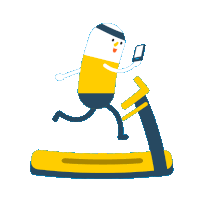

Unveiling Stiff-Legged Deadlifts with Dumbbells
Understanding Stiff-Legged Deadlifts
Benefits of Stiff-Legged Deadlifts with Dumbbells
Hamstring and Glute Development
Flexibility and Range of Motion
Muscles Worked in Stiff-Legged Deadlifts with Dumbbells
Refining Your Stiff-Legged Deadlifts Technique
Embark on a transformative journey with the Stiff-Legged Deadlifts, a dynamic exercise that can redefine your lower body strength and flexibility. In this comprehensive guide, we'll walk you through the nuances of executing Stiff-Legged Deadlifts with dumbbells, uncover the myriad benefits, pinpoint the muscles at work, and provide valuable tips to elevate your fitness experience.
Stiff-Legged Deadlifts with dumbbells are a compound exercise targeting the posterior chain, emphasizing the hamstrings and glutes. By keeping the legs straight throughout the movement, this exercise adds an extra dimension to traditional deadlifts.
Mastering the correct form is paramount for maximizing the effectiveness of Stiff-Legged Deadlifts with dumbbells.
Stiff-Legged Deadlifts with dumbbells effectively isolate the hamstrings and glutes, fostering targeted muscle development.
Consistent inclusion of this exercise can contribute to enhanced muscle definition and a well-sculpted posterior chain.
While primarily targeting the hamstrings and glutes, Stiff-Legged Deadlifts engage the lower back muscles, promoting overall posterior chain activation.
Strengthening the lower back through this exercise can contribute to improved lumbar stability, reducing the risk of lower back injuries.
The elongation of the hamstrings during the descent promotes flexibility, contributing to improved overall range of motion.
The controlled stretching of the hamstrings during the movement acts as a dynamic stretch, enhancing flexibility over time.
Stiff-Legged Deadlifts predominantly target the hamstrings, stimulating muscle growth and improving strength.
The glute muscles are actively engaged throughout the movement, contributing to a firm and sculpted buttocks.
While not the primary focus, the lower back muscles play a supporting role, aiding in stability and overall posterior chain activation.
The calves and core muscles are indirectly engaged to provide stability and support during the lifting and lowering phases.
Tailor the weight of the dumbbells to your fitness level. Starting with lighter weights allows you to focus on proper form before progressing to heavier loads.
Maintain mindfulness during the descent and ascent phases. Focus on feeling the stretch in your hamstrings as you lower the dumbbells and consciously engage the glutes during the ascent.
As your strength and flexibility improve, consider gradually increasing the weight of the dumbbells. Progressive overload is key to continuous muscle adaptation.
Include Stiff-Legged Deadlifts with dumbbells in your lower body workout routine. Balancing volume (number of sets and repetitions) and frequency optimizes muscle stimulation.
Combine Stiff-Legged Deadlifts with compound movements like squats and lunges for a comprehensive lower body workout.
Incorporate post-workout stretching for the hamstrings and glutes to enhance flexibility and aid in muscle recovery.
In conclusion, Stiff-Legged Deadlifts with dumbbells are a versatile and effective exercise for anyone looking to enhance their lower body strength and flexibility. By prioritizing proper form, understanding the targeted muscles, and incorporating progressive overload, you can unlock the full potential of this dynamic movement.
.png)